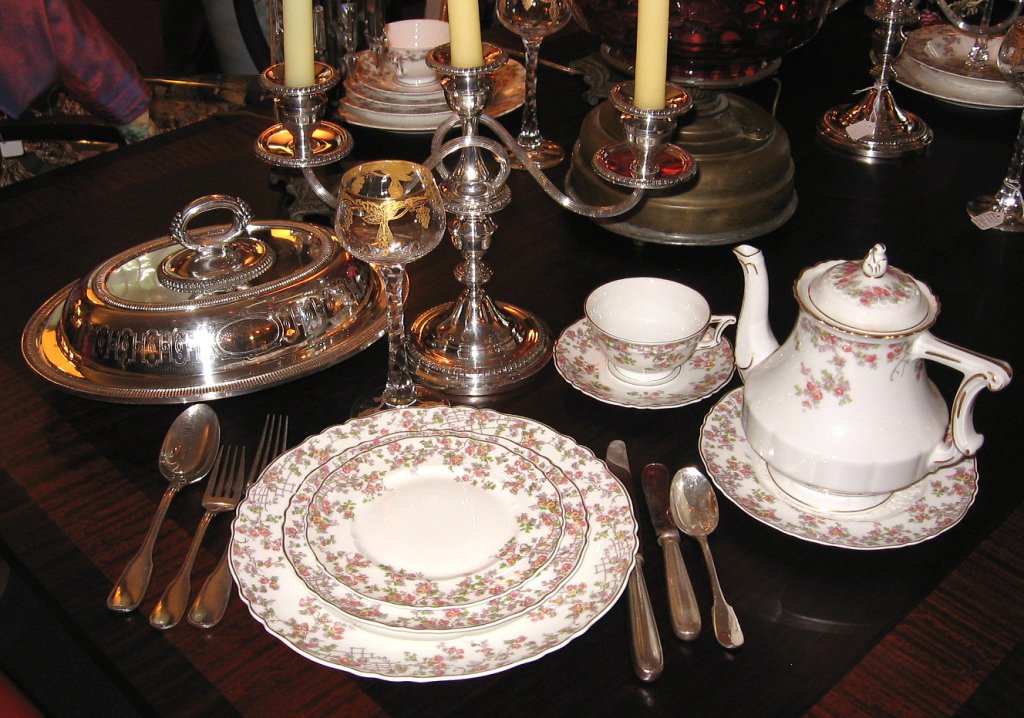Silver was extremely popular from the late 18th Century and throughout the 19th Century, especially among the Victorians.
Silver jewelry, especially Mexican silver, was fashionable in the late 1920 through the 1940s. Silver tableware and decorative accessories were popular again in the post-war ‘40s and ‘50s. Silver jewelry came back again in the 1960s. So, it’s a cinch you’ll find these things in many of today’s antique shops.
Or will you?
So much silver is being sold for weight today that many dealers have been unloading it, because they fear their customers wouldn’t be willing to pay the higher prices. Well, somebody’s buying up silver, and those who are often wind up with items more valuable than their weight.
Before you sell your silver for weight, you should pass it by some antique dealers first to see if your silver may be more than silver, and may be more valuable for its artistry and craftsmanship, its age, rarity or historical significance.
You don’t sell Tiffany or Georg Jensen silver for weight, of course, nor Spratling, among those artists working Mexico back in the ‘30s. And there are other artists too numerous to mention here. Nor do you sell old Irish silver, or any Russian silver at all. Do you know how old your silver is? Could it be Georgian, from the late 1700s? That would certainly be worth more than its weight.
Is your silver coin silver? It contains less silver than sterling (.900 instead of .925), but it is valuable as historic Americana, made only from colonial times until around the 1840s, and pieces by certain silversmiths can be very valuable.
Not all American silver patterns are created equal, either. The top 10 patterns include: Gorham’s Buttercup, Chantilly, and Strasbourg; Kirk’s Repousse; Towle’s Old Master; Reed and Barton’s Francis I, and Classic Rose; Wallace’s Grand Baroque; and International’s Royal Danish.
Check the web sites of Silver Queen and Replacements Limited. Of course, they charge a premium of about 20 percent as a sort of built-in finder’s fee, but you will get the idea that some flatware patterns are definitely worth more than their weight.
We all should notice, too, that the higher prices for precious metals is exciting interest in all metals, especially the artful metal of the late 19th and early 20th Century. But that’s another column.
Arthur Schwerdt, a certified appraiser, is the author of “The Antique Story Book: Finding the Real Value of Old Things,” and co-owner of The August Farmhouse Antiques on Route 9 in Swainton. Send your comments, questions and appraisal requests to: aschwerdt@cmcherald.com.:
West Wildwood – I see Sweden has cancelled the proposed windmills off their shores. This follows the overwhelming majority of fellow West Wildwood residents who have denounced the plan to place windmills along the…








